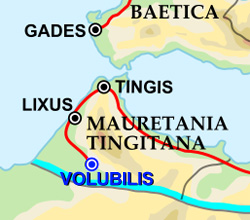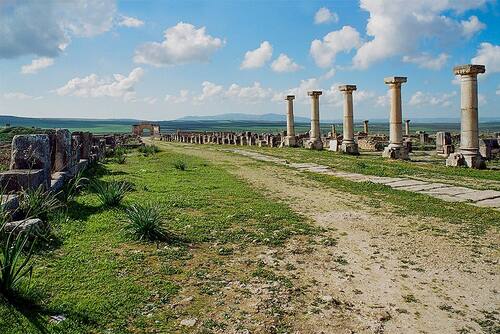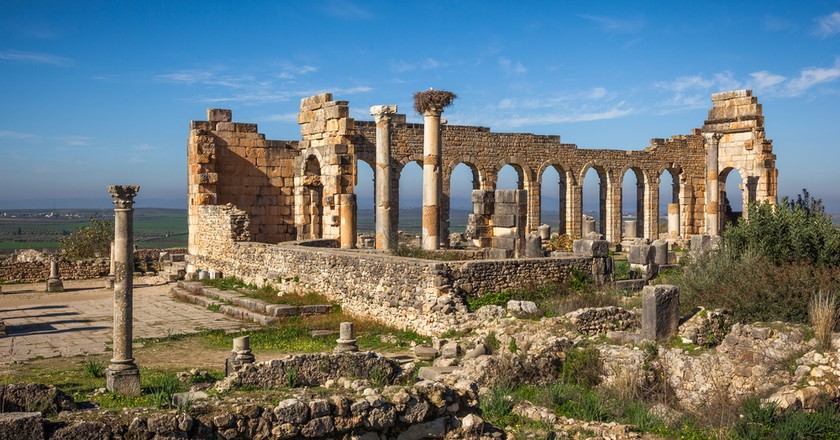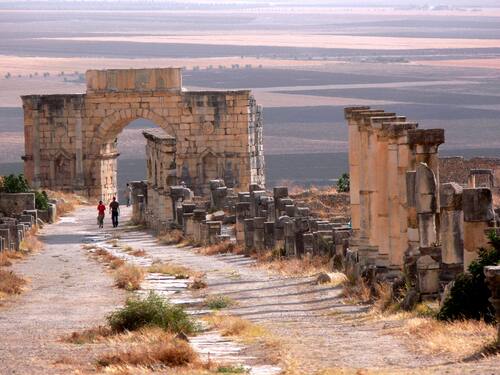(By Volubilis_panorama.jpg: Иерей Максим Массалитинderivative work: Prioryman - This file was derived from: Volubilis panorama.jpg:, CC BY-SA 2.0, https://commons.wikimedia.org/w/index.php?curid=22418406)
Located on a ridge above a fertile plain near the present city of Meknes, Volubilis, founded in the third century BC was part of the Kingdom of Mauretania which occupied lands now part of Morocco and Algeria. After Rome's destruction of Carthage in 146 BC, Mauretania became a Roman client kingdom, and in the reign of Augustus, Volubilis became its capital. The Emperor Claudis annexed the kingdom in 44 AD, initiating an era of prosperity for Volubilis, as it grew to cover 100 acres with 1.6 miles of protective walls, and becoming a major producer of olive oil, a highly valued commodity across the empire.

At its peak in the second century AD the city may have had 20,000 inhabitants and was described by the geographer Pomponius Mela as one of "the wealthiest cities, albeit the wealthiest among small ones" in the province. Like most Romanized cities, the majority of the inhabitants were of local origin, in this case Berber, though Latin was the common language. Again, like most prosperous Roman cities, the remains of many villas owned by the wealthier citizens are found on its outskirts.
Throughout its history as part of the empire, Volubilis remained threatened by unconquered mountain Berber tribes and there is evidence of Roman cavalry and infantry cohorts from Hispania, Gaul, Belgia, and Syria stationed in the forts surrounding the city.

It was only with the empire's turmoil in the late 3rd century, that Rome withdrew from Volubilis, maintaining garrisons only in a limited coastal stretch to the north near present day Tangiers (for more on this period see Diocletian Has A Very Good Day).

Volubilis remained occupied after Rome's retreat and for the next century there is evidence of new construction, new mosaics, continuing chariot races, and Latin usage. After an earthquake in the late 4th century, the city slowly shrank though it remained the center of a Christian population until its final abandonment in the 11th century.

Today it remains abandoned, a reminder of the reach of Rome, and a UNESCO World Heritage Site.


No comments:
Post a Comment